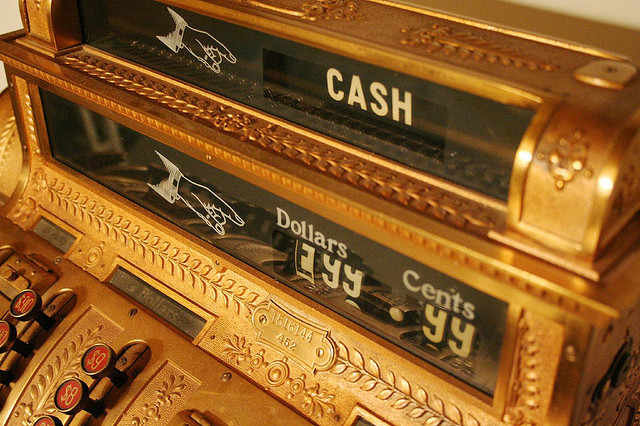
Cash Register 99.99
Cash Register by 99.99, via Flickr.
As the end of the financial year approaches, it’s time to start to assessing financials and tax liabilities, and most people’s email boxes are filling up fast with requests for donations from here, there and everywhere. As a cultural organisation or non-for-profit it’s important to know how to ask for donations and do it well. Here are a few tips to get you started.
Unlike crowdfunding or sponsorships, where rewards such as monogrammed cups, free CDs of your favourite band, and hand-printed t-shirts are used to entice contributions, seeking financial donations is a different kind of fundraising. Provided your organisation has tax-deductibility status, donations can be a valuable source of income. Remember though, donors must not recieve a direct material benefit as a result of their donation.
When your organisation is registered as a deductible gift recipient (DGR), tax deductibility can be a significant carrot to dangle. Donations are most successful when there’s a personal connection with the cause and when donors are convinced their actions will make a difference. Be clear in telling potential donors the purpose and impact of their donation. This can be as simple as: “with your donation of $X we are able to do Y”.
It’s important to make giving as easy as possible. Don’t make people jump through hoops to give you money. Think about using one of the secure online portals such as givenow.com.au that enable the donor to click and donate by credit card. Provide a basic Word document form for people to download, fill in and return, or an interactive pdf to complete and return. The form should include the donors name, their contact details, whether or not they want public acknowledgement, and the ways they can donate such as direct deposit, credit card or cheque. Include the BSB and account numbers on your form. Make sure you double check these.
Many people appreciate public acknowledgement for their contribution while others prefer to give anonymously. Always ask donors if and how they want to be acknowledged and manage their wishes dutifully. Remember you are obliged by law to issue a receipt and that the donor requires one to claim their tax deduction. Forward this and the letter of thanks as soon as possible after you receive the donation.
Make your letter of thanks personal rather than a form letter and include an engaged response of what effect their donation will have. Yes, this will take a bit a time, but it will establish a relationship with those who donate and hopefully convert them into long term donors. If people have donated to a particular project, share the love and update them as the project progresses or comes to fruition. Remember, they helped make it happen.
With the “end of financial year” rush to attract new donations looming, consider planting the seed of a donation much earlier in your calendar next year. Think March or Christmas, or approach people quarterly. Build the relationship on an ongoing basis. It’s really more akin to ‘friendraising’ rather than fundraising.
Ultimately, convincing people that their donation will make a difference is the hardest part of any donation appeal. You will always be competing for discretionary money. Even though most donations are given with the heart not the head, be mindful to demonstrate good stewardship in your ask, and once the money is in your bank tell a clear story of the impact the donation has made.
Consider these questions:
- Have I given people enough time to respond?
- Have I made it easy for people to donate?
- How will I acknowledge them?
- Have I convinced them their donation will make a difference?
Find out more about DGR status here http://mgnsw.org.au/sector/news/throw-out-lifeline-today/
Find out more about crowdfunding here http://mgnsw.org.au/sector/news/crowdfunding-tips/



